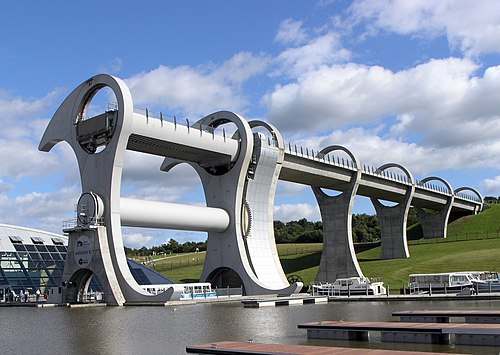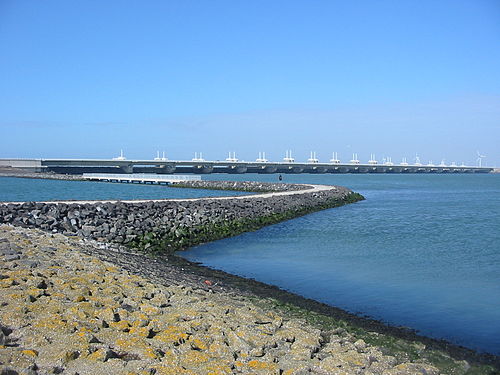What is civil Engineering ?
CIVIL ENGINEERING
Civil engineering is a professional engineering discipline that deals with the design, construction, and maintenance of the physical and naturally built environment, including public works such as roads, bridges, canals, dams, airports, sewerage systems, pipelines, structural components of buildings, and railways.
History :
Civil engineering as a discipline:
Civil engineering is the application of physical and scientific principles for solving the problems of society, and its history is intricately linked to advances in the understanding of physics and mathematics throughout history. Because civil engineering is a broad profession, including several specialized sub-disciplines, its history is linked to knowledge of structures, materials science, geography, geology, soils, hydrology, environmental science, mechanics, project management, and other fields.
Father of civil engineering : - John Smeaton
Education
Civil engineers typically possess an academic degree in civil engineering. The length of study is three to five years, and the completed degree is designated as a bachelor of technology, or a bachelor of engineering. The curriculum generally includes classes in physics, mathematics, project management, design and specific topics in civil engineering. After taking basic courses in most sub-disciplines of civil engineering, they move on to specialize in one or more sub-disciplines at advanced levels.
 |
| Surveying students with professor at the Helsinki University of Technology in the late 19th century. |
Sub-disciplines
There are a number of sub-disciplines within the broad field of civil engineering. General civil engineers work closely with surveyors and specialized civil engineers to design grading, drainage, pavement, water supply, sewer service, dams, electric and communications supply. General civil engineering is also referred to as site engineering, a branch of civil engineering that primarily focuses on converting a tract of land from one usage to another. Site engineers spend time visiting project sites, meeting with stakeholders, and preparing construction plans. Civil engineers apply the principles of geotechnical engineering, structural engineering, environmental engineering, transportation engineering and construction engineering to residential, commercial, industrial and public works projects of all sizes and levels of construction. Coastal engineering
Coastal engineering is concerned with managing coastal areas. In some jurisdictions, the terms sea defense and coastal protection mean defense against flooding and erosion, respectively.
Construction engineering
Construction engineering involves planning and execution, transportation of materials, site development based on hydraulic, environmental, structural and geotechnical engineering.
Environmental engineering
Environmental engineering is the contemporary term for sanitary engineering, though sanitary engineering traditionally had not included much of the hazardous waste management and environmental remediation work covered by environmental engineering.
Geotechnical engineering
Geotechnical engineering studies rock and soil supporting civil engineering systems. Knowledge from the field of soil science, materials science, mechanics, and hydraulics is applied to safely and economically design foundations, retaining walls, and other structures. Environmental efforts to protect groundwater and safely maintain landfills have spawned a new area of research called geo-environmental engineering.
Materials science and engineering
Materials science is closely related to civil engineering. It studies fundamental characteristics of materials, and deals with ceramics such as concrete and mix asphalt concrete, strong metals such as aluminum and steel, and thermosetting polymers including polymethylmethacrylate (PMMA) and carbon fibers.
Site development and planning
Site development, also known as site planning, is focused on the planning and development potential of a site as well as addressing possible impacts from permitting issues and environmental challenges.
Structural engineering
Surveying
Surveying is the process by which a surveyor measures certain dimensions that occur on or near the surface of the Earth. Surveying equipment such as levels and theodolites are used for accurate measurement of angular deviation, horizontal, vertical and slope distances.
Transportation engineering
Transportation engineering is concerned with moving people and goods efficiently, safely, and in a manner conducive to a vibrant community. This involves specifying, designing, constructing, and maintaining transportation infrastructure which includes streets, canals, highways, rail systems, airports, ports, and mass transit.
Municipal or urban engineering
Municipal engineering is concerned with municipal infrastructure. This involves specifying, designing, constructing, and maintaining streets, sidewalks, water supply networks, sewers, street lighting, municipal solid waste management and disposal, storage depots for various bulk materials used for maintenance and public works (salt, sand, etc.), public parks and cycling infrastructure.
Water resources engineering
 |
| Hoover Dam |
Civil engineering systems
Civil engineering systems is a discipline that promotes the use of systems thinking to manage complexity and change in civil engineering within its wider public context. It posits that the proper development of civil engineering infrastructure requires a holistic, coherent understanding of the relationships between all of the important factors that contribute to successful projects while at the same time emphasising the importance of attention to technical detail. Its purpose is to help integrate the entire civil engineering project life cycle from conception, through planning, designing, making, operating to decommissioning.
 |
| The Falkirk Wheel in Scotland |
See also
- https://en.wikipedia.org/wiki/Civil_engineering
- https://en.wikipedia.org/wiki/Architectural_engineering
- https://en.wikipedia.org/wiki/Civil_engineering_software
- https://en.wikipedia.org/wiki/Engineering_drawing
- https://en.wikipedia.org/wiki/List_of_civil_engineers
- https://en.wikipedia.org/wiki/Railway_engineering
- https://www.civil.columbia.edu/about/what-civil-engineering
- https://www.civil.columbia.edu/about/what-civil-engineering
- https://www.shiksha.com/engineering/civil-engineering-chp
- https://www.topuniversities.com/courses/engineering-civil-structural/guide












इस टिप्पणी को लेखक द्वारा हटा दिया गया है.
जवाब देंहटाएंNyc ...
हटाएंइस टिप्पणी को लेखक द्वारा हटा दिया गया है.
जवाब देंहटाएंNice blog
जवाब देंहटाएंAnd accurately defined about civil engineering
thanks
हटाएंVery important information for Civil Engineering Students
जवाब देंहटाएंthanks
हटाएंGood job
जवाब देंहटाएंthanks
हटाएंVery important information for Civil Engineering thank you so much bro...
जवाब देंहटाएंthanks
हटाएंthanks
जवाब देंहटाएंVery nice your blog are very informative best of luck
जवाब देंहटाएंGood side shekhar ji
जवाब देंहटाएंGreat! You should write more...
जवाब देंहटाएं